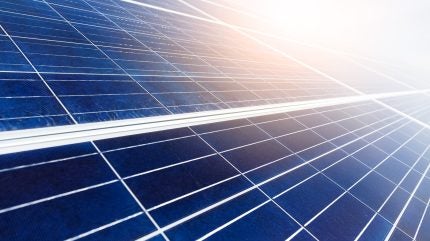
Google has entered a renewable energy agreement with energyRe, securing more than 600MW of solar and solar with storage projects in the US state of South Carolina.
The deal is the second collaboration between the two companies and contributes more than 1 gigawatt alternating current (GWac) of new clean capacity, aligning with Google’s aim for net-zero carbon emissions by 2030.

Discover B2B Marketing That Performs
Combine business intelligence and editorial excellence to reach engaged professionals across 36 leading media platforms.
Google’s head of data centre energy Amanda Peterson Corio stated: “Strengthening the grid by deploying more reliable and clean energy is crucial for supporting the digital infrastructure that businesses and individuals depend on.
“Our collaboration with energyRe will help power our data centres and the broader economic growth of South Carolina.”
The agreement with energyRe addresses local energy requirements with renewable sources and reinforces Google’s commitment to sustainability.
energyRe’s national portfolio encompasses the development of renewable energy projects, including large-scale solar, wind and storage assets, designed to enhance grid reliability, reduce costs and meet the growing demand for electricity.

US Tariffs are shifting - will you react or anticipate?
Don’t let policy changes catch you off guard. Stay proactive with real-time data and expert analysis.
By GlobalDataenergyRe CEO Miguel Prado stated: “This agreement is a milestone in energyRe’s mission to develop innovative and impactful clean energy solutions for the future.
“We’re honoured to partner with Google to help advance their ambitious sustainability and decarbonisation objectives while delivering dependable, locally sourced clean energy to meet growing energy demands.”
Google also signed a power purchase agreement (PPA) in April 2025 with Copenhagen Infrastructure Partners for renewable energy from the upcoming Fengmiao 1 wind farm in Taiwan.
This marks Google’s first offshore wind PPA in the region and will provide its facilities in Taiwan with cost-effective, carbon-free electricity.
The Fengmiao 1 wind farm, to be operational by 2027, is set to significantly contribute to Taiwan’s offshore wind power sector and support the region’s clean energy transition.



